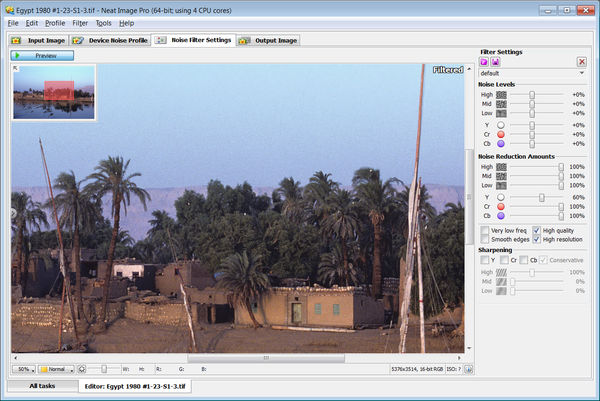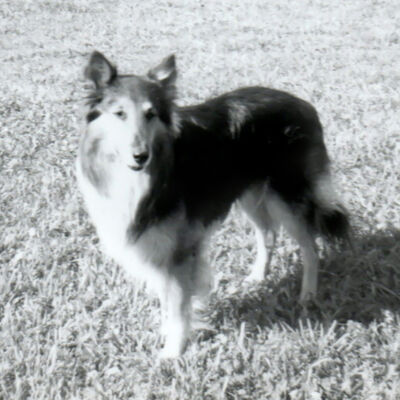Maybe it's about a good image, a well-processed image and not about RAW/JPG
May 20, 2017 19:12:19 #
TheDman
Loc: USA
selmslie wrote:
I also said: br 1. No, it's the result of noise re... (show quote)
1. Did you say the things I mentioned?
2. We're they right or wrong?
May 20, 2017 20:32:12 #
TheDman wrote:
1. Did you say the things I mentioned?
2. We're they right or wrong?
2. We're they right or wrong?
You are dead wrong.
Noise reduction and sharpening work against each other. As I stated last, "Too much noise reduction can kill detail and sharpness. Too much sharpening can make noise worse (more visible)." This is common knowledge that seems to be over your head, I'm not going to keep repeating this because you don't seem to understand the concept.
If you had applied as much noise reduction in your computer processing of the raw file as you allowed your camera to do, your result would have been just as bad. Correcting the settings in your own camera seems to be too difficult for you. Read your camera's manual.
You might be able to develop a raw image on your computer but you don't know how to operate your own camera and capture a well-processed (by the camera) JPEG. If you think that any fool can capture a JPEG but yet you can't do it, how smart are you?
There is no point in discussing "a well-processed image" image with you if you know only one way to do it. Until you learn how to do it both ways you are not qualified to make the comparison.
May 20, 2017 21:42:01 #
TheDman
Loc: USA
selmslie wrote:
You are dead wrong. br br Noise reduction and sh... (show quote)
You're ducking. Once again:
1. Did you say those things
2. Were they right or wrong.
May 20, 2017 22:31:44 #
selmslie wrote:
You are dead wrong. br br Noise reduction and sh... (show quote)
You are not even a tenth of a photographer the "TheDman" is. Try improving your snaps - time would be better spent.
May 21, 2017 01:03:05 #
leftj wrote:
Oxford Dictionary - "not necessarily true or reliable, because based on personal accounts rather than facts or research."
...yes, and i think your usage is incorrect because it implies untruth...I think the poster was paraphrasing, until he comes forward with "...I made that up!" That's all, not trying to be a language policeman but I think it's important not to accuse someone of untruth until that act is proven... ;0)
May 21, 2017 02:19:37 #
chasgroh wrote:
...yes, and i think your usage is incorrect because it implies untruth...I think the poster was paraphrasing, until he comes forward with "...I made that up!" That's all, not trying to be a language policeman but I think it's important not to accuse someone of untruth until that act is proven... ;0)
unverified or unproven, without evidence one way or the other. Ansell Adams certainly didn't have exif and I've never seen an Ansell Adams photograph with an exposure given. Since exposure depends on the light available, the actual values wouldn't work unless the light level was the same. I find it plausible that he would consider the placing of tones into suitable zones was more important to his technique than the exposures used in a particular image. Can't prove he did and he isn't saying.
May 21, 2017 03:44:37 #
wdross
Loc: Castle Rock, Colorado
blackest wrote:
you might enjoy this page it was an interview given not long before he died.
http://www.maryellenmark.com/text/magazines/art%20news/905N-000-001.html
http://www.maryellenmark.com/text/magazines/art%20news/905N-000-001.html
Quite an interview. Thank you very much for the link.
May 21, 2017 04:19:43 #
TheDman wrote:
You're ducking. Once again:
1. Did you say those things
2. Were they right or wrong.
1. Did you say those things
2. Were they right or wrong.
Hint: the most common form of noise reduction is called an "unsharp mask".
Learn to set up your camera.
May 21, 2017 05:34:02 #
wdross wrote:
Quite an interview. Thank you very much for the link.
I'll second that.
In the interview Adams describes how Stieglitz looked at his images for the first time, "He went all through the portfolio and never said a word. He spent about a full hour. Every time I'd try to say something, he'd wave me aside. He didn't want to talk." Stieglitz did not want to talk about the technical stuff - shop talk. He knew how it was done. The image was everything.
I have spent a lot of time reading about and looking at the images of Adams and most of the names that were mentioned in that interview. Other than The Negative and The Print, none of the books I studied ever said much about the technical aspects of capturing, developing and printing the images - no pixel peeping, post processing or arguing about one film, paper or developer over another. Occasionally Adams would say something because he was expected to do so as a teacher but for the rest of them the image spoke for itself.
As the thread title says, "it's about a good image, a well-processed image and not about RAW/JPG." It's about subject matter and the resulting image, not the medium or the technique.
May 21, 2017 06:54:05 #
selmslie wrote:
I'll second that. br br In the interview Adams ... (show quote)
One of the things he said in that interview was that he had 1000's of negatives that had never been printed and around 500 he said must be printedin the previous year he had printed 30 or 40 since this wasn't long before his death most of that 500 he never got to print. Are these now lost? Ansell Adams.com seems to only be reproducing previously published work.
May 21, 2017 07:26:22 #
TheDman
Loc: USA
selmslie wrote:
Hint: the most common form of noise reduction is called an "unsharp mask.
Lol! No, it's not. That's three wrong statements now. I'd quit while you're behind.
May 21, 2017 09:03:24 #
TheDman wrote:
Lol! No, it's not. That's three wrong statements now. I'd quit while you're behind.
I guess you don't have enough sense to connect the concept of "unsharp mask" with the idea of sharpness. Sharp and unsharp are antonyms.
An unsharp mask is commonly used in many photo editors to make an image sharper. See Sharpening an image with Unsharp Mask, "Julieanne Kost discusses one of the most commonly used filters in Photoshop, the Unsharp Mask filter, which allows you to make an image appear sharper..."
In this Noise reduction article you will find:
"Tradeoffs
In selecting a noise reduction algorithm, one must weigh several factors:
- the available computer power and time available: a digital camera must apply noise reduction in a fraction of a second using a tiny onboard CPU, while a desktop computer has much more power and time
- whether sacrificing some real detail is acceptable if it allows more noise to be removed (how aggressively to decide whether variations in the image are noise or not)
- the characteristics of the noise and the detail in the image, to better make those decisions..."
It is obvious that the JPEG in your example needed no noise reduction at all. You did not need noise reduction for the raw file. So far, the only explanation we can arrive at is that your camera applied too much noise reduction which killed all of the sharpness. You just did not know how to turn it off. That's your fault, not the camera's.
NeatImage makes it obvious that the two adjustments (noise reduction and sharpening) need to be worked on simultaneously because each one works against the other.
May 21, 2017 09:11:59 #
selmslie wrote:
That's exactly what we have been telling you! Your camera settings applied too much noise reduction. You need to adjust your camera's JPEG settings. Duh!
Apparently you are not qualified to capture a JPEG image.
Apparently you are not qualified to capture a JPEG image.
He is qualified to capture a JPG image. He just intentionally screwed it up to provide fake testimony of why one should shoot raw. It's pretty obvious from the photo's. One could intentionally screw up a jpg in camera or screw up a raw photo in post. To present an intentionally screwed up photo to prove a lame point is disingenuous to say the least.
May 21, 2017 09:48:56 #
BigDaddy wrote:
He is qualified to capture a JPG image. He just intentionally screwed it up to provide fake testimony of why one should shoot raw. It's pretty obvious from the photo's. One could intentionally screw up a jpg in camera or screw up a raw photo in post. To present an intentionally screwed up photo to prove a lame point is disingenuous to say the least.
I'm afraid you are right.
If he is not as ignorant and lazy as he seems then he is blatantly dishonest. Considering his general demeanor, the latter is more likely.
Either way, it's pathetic.
PS: Other than High ISO Noise Reduction and Long Exposure Noise Reduction, none of my cameras have explicit settings to reduce noise. I believe that both of those settings apply to both the raw and JPEG files. However, all of them have sliders for sharpness in most of their creative modes so you can increase or decrease the sharpness of the JPEG. This appears to be how TheDman has accidentally or deliberately screwed up the JPEG in his demonstration. Either way, the demo he presented is wrong and misleading. He's either a fool or a liar - not much of a choice.
If you want to reply, then register here. Registration is free and your account is created instantly, so you can post right away.





